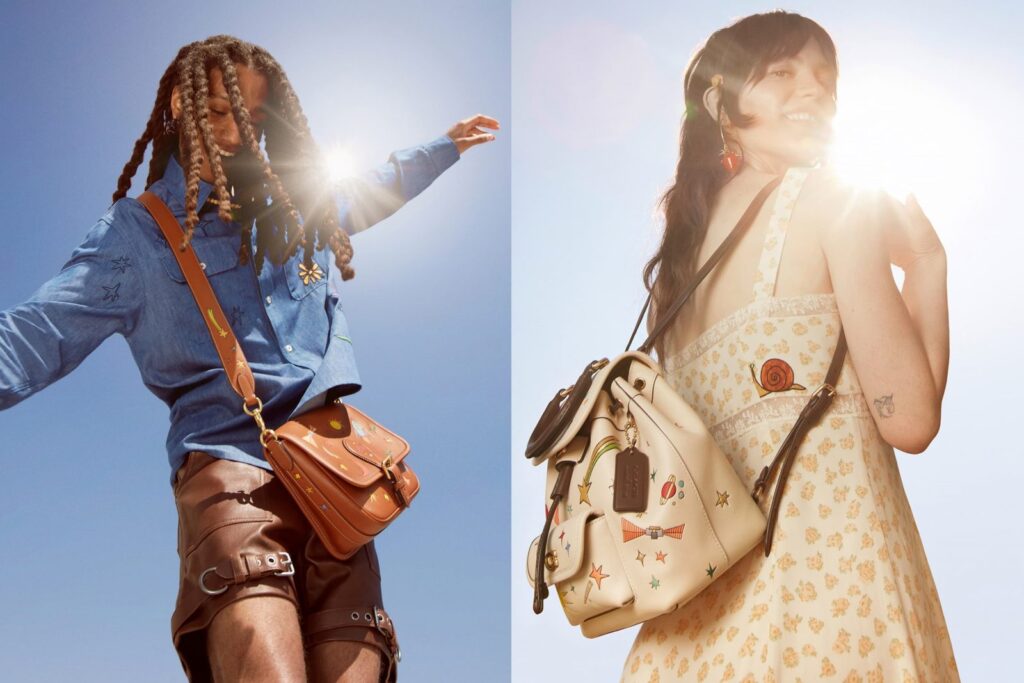Tapestry, Inc. made headlines on August 10 when it announced that it had entered into a definitive agreement to acquire Capri Holdings in a deal with a total enterprise value of approximately $8.5 billion. In a statement, New York-headquartered Tapestry said the acquisition will “bring together six highly complementary brands” – Capri’s Versace, Jimmy Choo, and Michael Kors brands, and its own properties, Coach, Kate Spade, and Stuart Weitzman – “with global reach, powered by Tapestry’s data-rich customer engagement platform and diversified, direct-to-consumer operating model.”
The result of the deal (which would eventually falter): A stateside luxury goods giant to take on European behemoths like LVMH, Kering, and Richemont. While “the combined company would still be dwarfed by [its] European rivals and lack the high-wattage labels and diversity that have fueled LVMH’s success,” for instance, the WSJ’s Suzanne Kapner wrote, the soon-to-be-bulked-up Tapestry is, nonetheless, betting on its European counterparts’ demonstration that in this segment of the market, being bigger is better.
The deal ultimately failed to pass regulatory muster, with the Federal Trade Commission challenging the merger on the basis that it “would eliminate direct head-to-head competition between Tapestry’s and Capri’s brands” and “give Tapestry a dominant share of the ‘accessible luxury’ handbag market, a term coined by Tapestry to describe quality leather and craftsmanship handbags at an affordable price.” Following a New York federal court’s grant of a preliminary injunction in October 2024, the parties pulled the plug on the deal.
Tapestry’s failed bid to scale comes more than 80 years after the company now known as Coach got its start. Founded by six artisans in New York City under the name Manhattan Leather Bags, the company would operate as a small, family-run wallet-making workshop on West 34th Street until it was acquired by Miles and Lillian Cahn in 1961 and rebranded as Coach Leatherware Company. The wallet-maker would become a handbag company at the suggestion of Mrs. Cahn, who created Coach’s first line of handbags – albeit not without some pushback from her husband. “I scoffed at first,” Mr. Cahn, who had been employed by Manhattan Leather Bags at the time of the buy-out, said in an interview decades later.
“In New York, there were a lot of handbag companies and at that time, stores were all buying knockoffs of bags made in Europe, but my wife prevailed.” Mrs. Cahn’s design – a specialtuy-leather bag inspired by a shopping bag – became the first successful Coach bag. “It became a classic,” Mr. Cahn said. “We started having loyal customers.” That was the start of what would ultimately become Tapestry.
Here is a look at the building of Tapestry into a mightier, more multifaceted player in the luxury space …
1985: Coach – Coach was acquired by Sara Lee Corporation for a reported $30 million. Under the umbrella of Sara Lee’s apparel/retail division, Coach “opened stores around the world and expanded into a broader range of accessories, including perfume, sunglasses and jewelry.”
2000: Coach – Sara Lee Corp. sold off a minority stake in Coach via an initial public offering on the NYSE (under the ticker “COH”) on October 4, 2000, selling more than 7 million shares and raising $118.08 million in the process. In furtherance of its larger plan to focus its holdings on food and beverage, intimates and underwear, and household products, Sara Lee shed the rest of its stake in Coach through a split-off that began in March 2001, “making good on its promise to shed its 83 percent stake in the leather goods company within a year of the IPO.”
2015: Stuart Weitzman – Coach, Inc. completed its acquisition of Stuart Weitzman from private equity firm Sycamore Partners in May 2015 for $574 million, stating at the time of closing that it “made initial cash payments of approximately $530 million to Sycamore Partners,” and additionally, would “make up to $44 million in contingent payments to Sycamore Partners upon the successful achievement of selected revenue targets over the three years following the closing of the acquisition.”
2017: Kate Spade & Company – Coach, Inc. completed its acquisition of Kate Spade & Co. in July 2017, paying $18.50 per share in cash for the formerly-NYSE-traded womenswear brand, making for a total transaction value of $2.4 billion. “The combination of Coach, Inc. and Kate Spade & Co. creates a leading luxury lifestyle company with a more diverse multi-brand portfolio supported by significant expertise in handbag design, merchandising, supply chain and retail operations as well as solid financial acumen,” Coach, Inc. said at the time. “Coach’s history and heritage, multi-channel, international distribution model, and seasoned leadership team uniquely position it to drive long-term sustainable growth for Kate Spade.”
Oct. 2017: Tapestry, Inc. – In October 2017, Coach, Inc. rebranded as Tapestry, Inc. in an effort to reflect the growing number of brands under its umbrella. (The group now trades under the “TPR” ticker on the NYSE.)
Feb. 2025: Stuart Weitzman – Tapestry, Inc. has entered into a definitive agreement to sell the Stuart Weitzman brand to Caleres, a market-leading portfolio of consumer-driven footwear brands, for $105 million in cash, subject to customary adjustments. The transaction is expected to close in the summer of 2025, subject to customary closing conditions.
“Stuart Weitzman is an iconic global footwear brand, whose teams have added to the passion, creativity, and craftsmanship of our organization over the last decade,” said Joanne Crevoiserat, Chief Executive Officer of Tapestry, Inc. “Importantly, as diligent stewards of our portfolio and disciplined allocators of capital, this transaction ensures that all our brands are positioned for long-term success and that we maintain a sharp focus on our largest value creation opportunities. At Tapestry, this means harnessing our position of strength to sustain Coach’s leadership and momentum while reinvigorating Kate Spade to drive durable organic growth and shareholder value. At the same time, we are pleased that we found Stuart Weitzman a home in Caleres – an ideal owner to guide its next chapter of growth.”
Jay Schmidt, president and CEO of Caleres added, “I have long admired Stuart Weitzman for the brand’s pivotal role in shaping the footwear industry. As we bring this iconic brand into the Caleres portfolio, we are committed to preserving its legacy of craftsmanship, quality and fit while driving it forward. The acquisition of Stuart Weitzman advances our strategic agenda to grow our Brand Portfolio segment with more global and direct-to-consumer reach.
He further stated, “Stuart Weitzman will be a lead brand for Caleres, and with this combination the Brand Portfolio segment will generate nearly half of our total revenue and will continue to generate over half of our operating profit. We will leverage our demonstrated, best-in-class footwear capabilities while pursuing category and channel growth. We expect to operate the brand profitably post integration and I look forward to partnering with both the Tapestry and Stuart Weitzman teams for a seamless and successful transition.”
Updated
February 19, 2025
This article was initially published on August 17, 2023 and has been updated accordingly.













